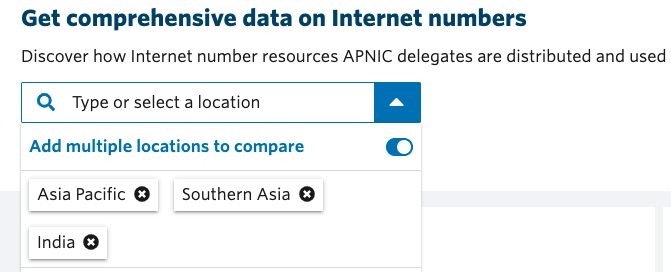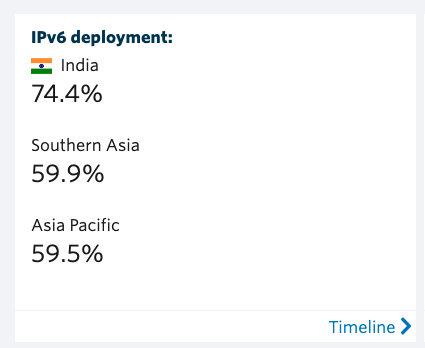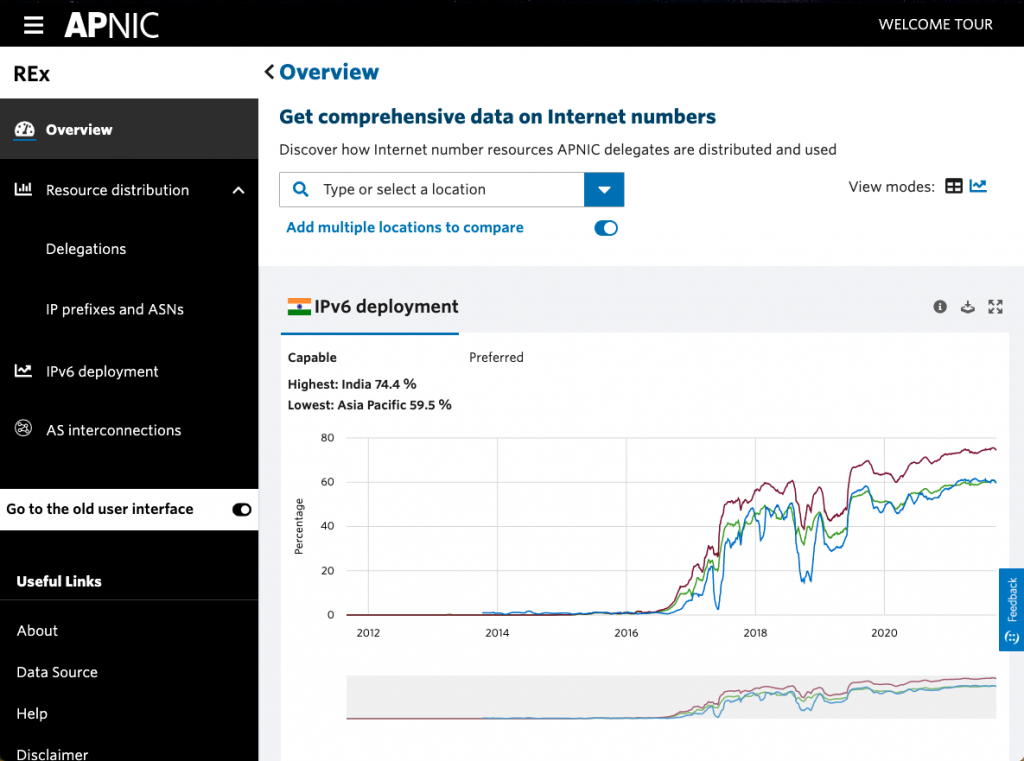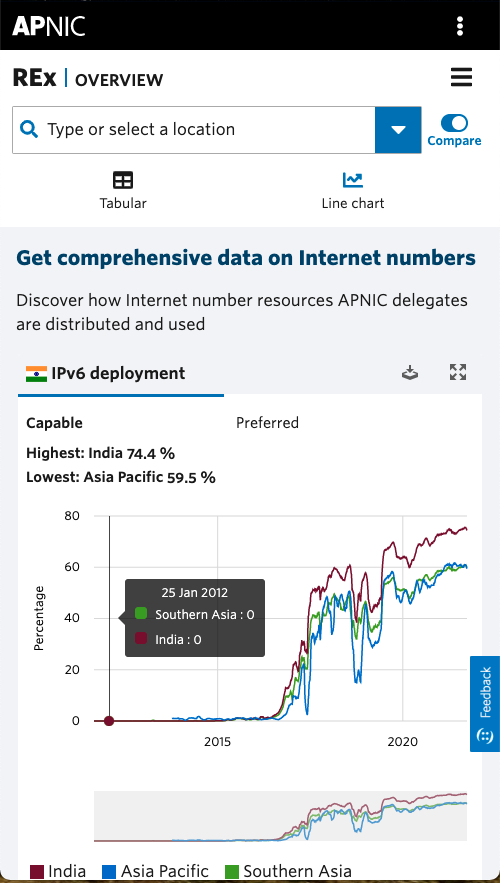
For some time now APNIC has been working on a refresh of the Internet Directory service (stats.apnic.net). The Internet Directory is a web service about Internet number resource distribution and uptake.
The new service is called the Resource Explorer (REx) (rex.apnic.net) and it recently had its soft launch.
Shortly, stats.apnic.net will be redirected to this service and the old interface retired. In the meantime, why not try out its new look and features?
What’s new?
REx comes with a new feature called ‘comparison mode’, which allows you to select a set of economies and regions to display in the same chart or table.
You could, for example, compare different economies for their history of resource distributions, or their deployment of IPv6, and combine this with a regional overview.
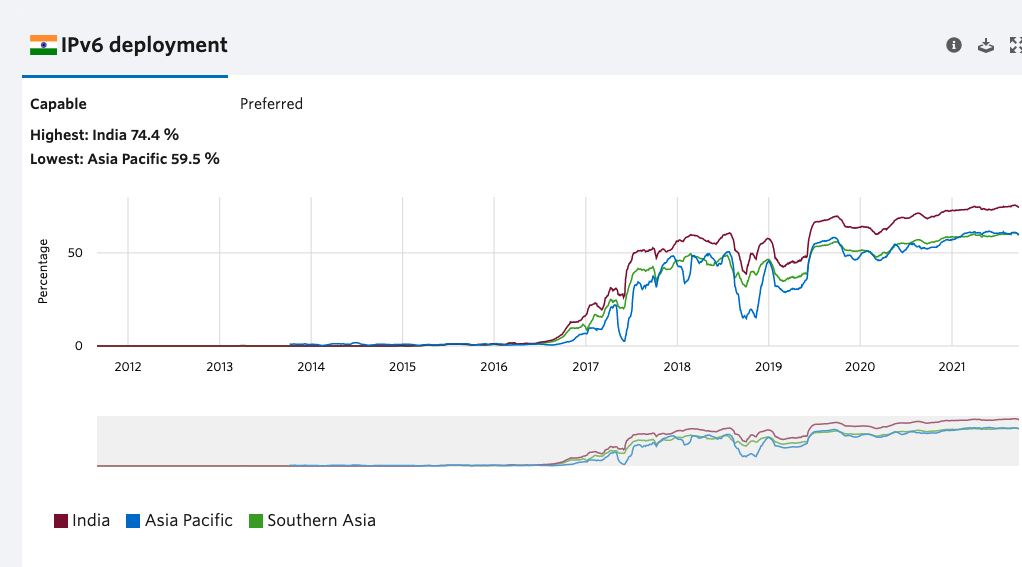
REx is responsive to your device/browser size
REx uses the responsive design methodology to make it reflect the size and shape of your browser window. It works more smoothly on tablets and phones, hiding the sidebar menu. On a desktop or laptop browser it makes full use of the available screen width.
This approach was already being used in other APNIC products DASH (Dashboard for Internet Health) and NetOX (The Network Operators’ toolboX). Now all the services align in their implementation method and design. This will make it easier to release consistent services across the information products family and more widely in APNIC (as common design elements are taken up by other services).
What’s next for REx?
As a result of user feedback, work will be done next year towards including information about the resources not managed in the APNIC system in REx. Discussions with the other RIRs will take place that may allow REx to reflect global Internet number resource distribution, including all other regions and economies, as well as resources managed in other RIRs but deployed in the Asia Pacific.
By adjusting the information models, we have the potential to collaborate with our fellow RIRs in the Americas (LACNIC, ARIN), Europe and West Asia (RIPE NCC), and Africa (AFRINIC) to offer services in REx either here, operated by APNIC, or through collaborative use of the code and data management methods.
What’s next for the Internet Directory
Later this year the old interface on the URL will be retired and it will redirect to rex.apnic.net, or both names will simply use the same service. The legacy interface will continue to be supported for some time as a downgrade option. But if users are continuing to use the older service, we would like to know why, to better tailor the services. All feedback is appreciated and can be submitted via the feedback tab on the lower right-hand side of the REx web pages.
The views expressed by the authors of this blog are their own and do not necessarily reflect the views of APNIC. Please note a Code of Conduct applies to this blog.

